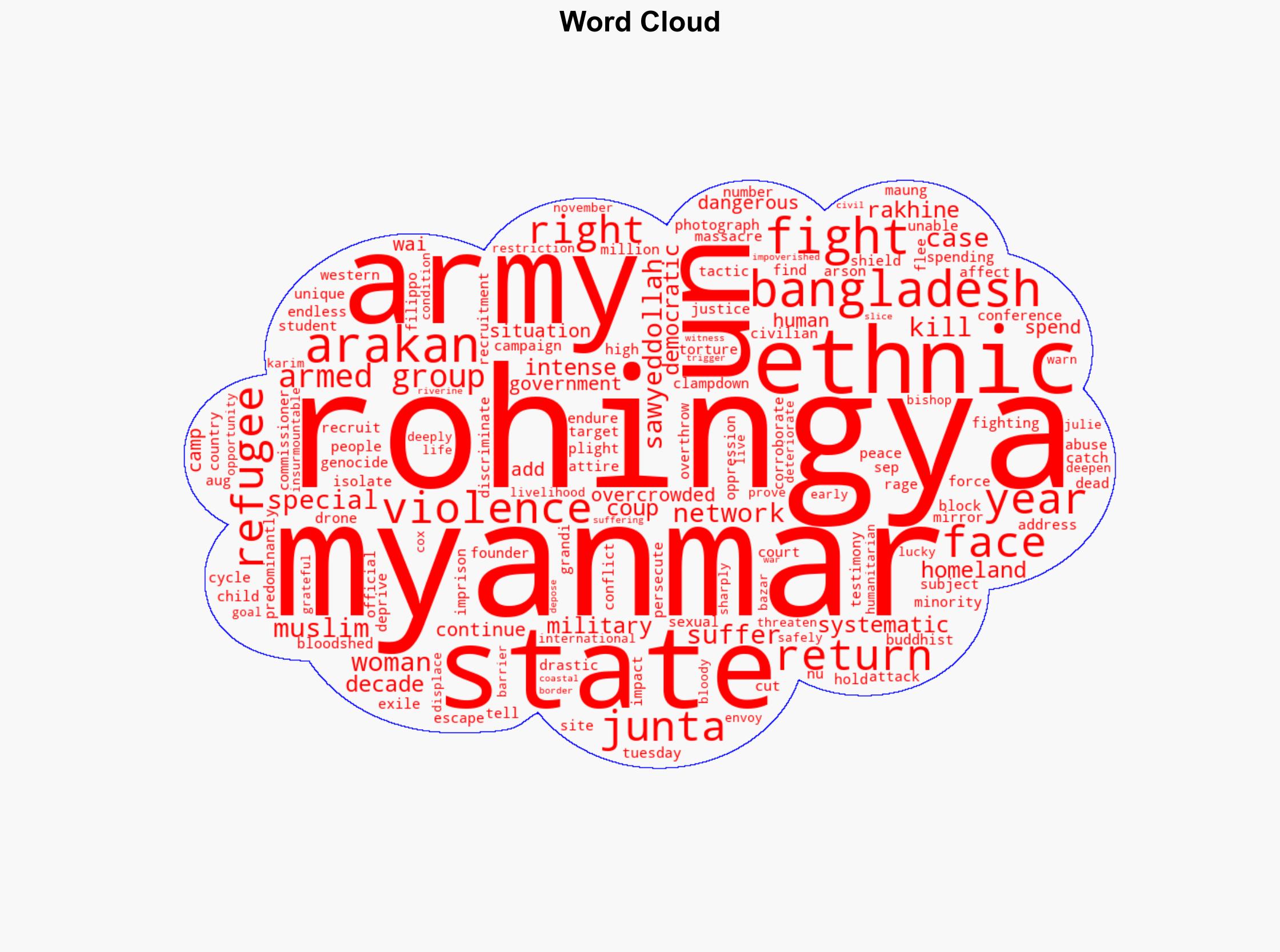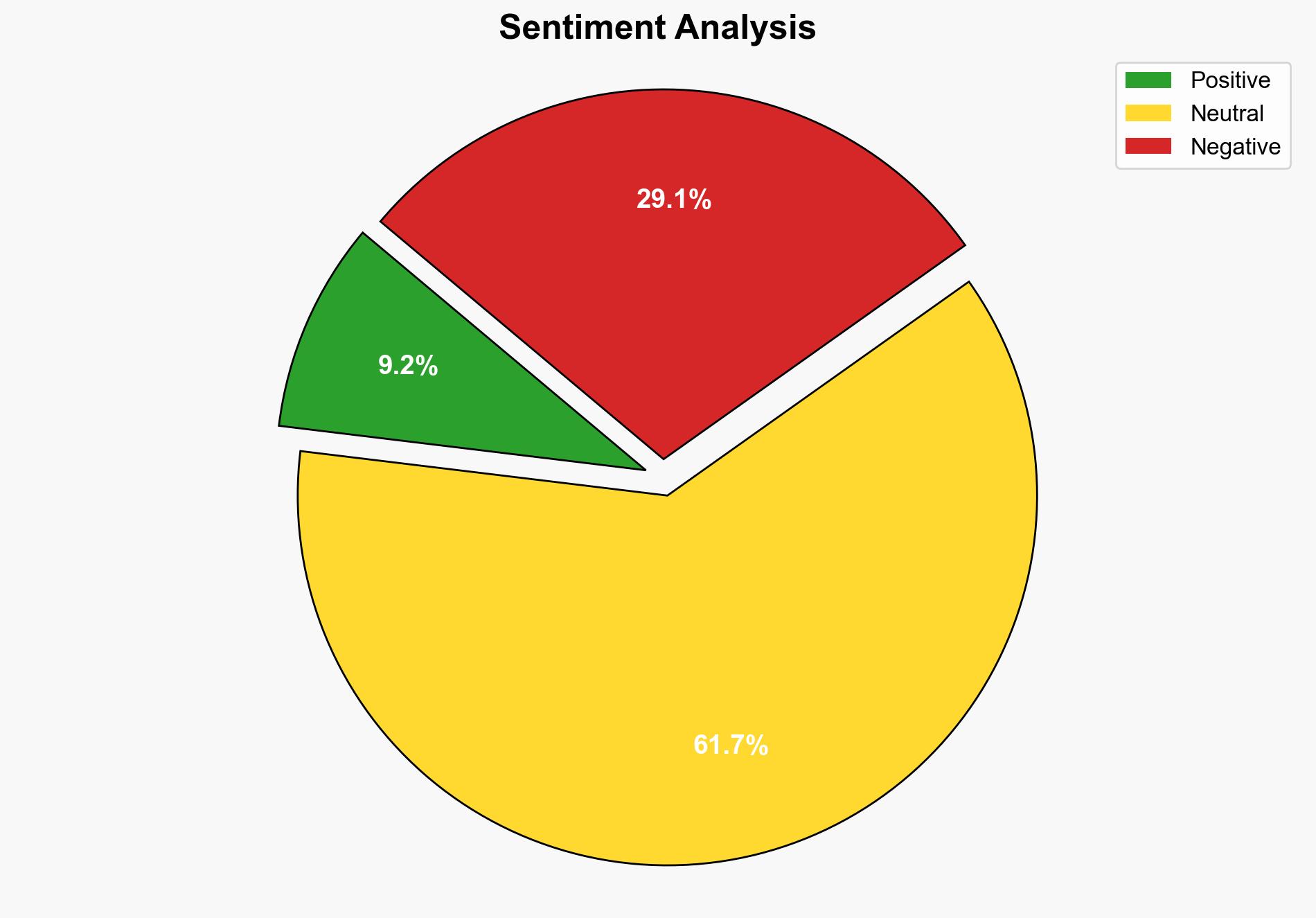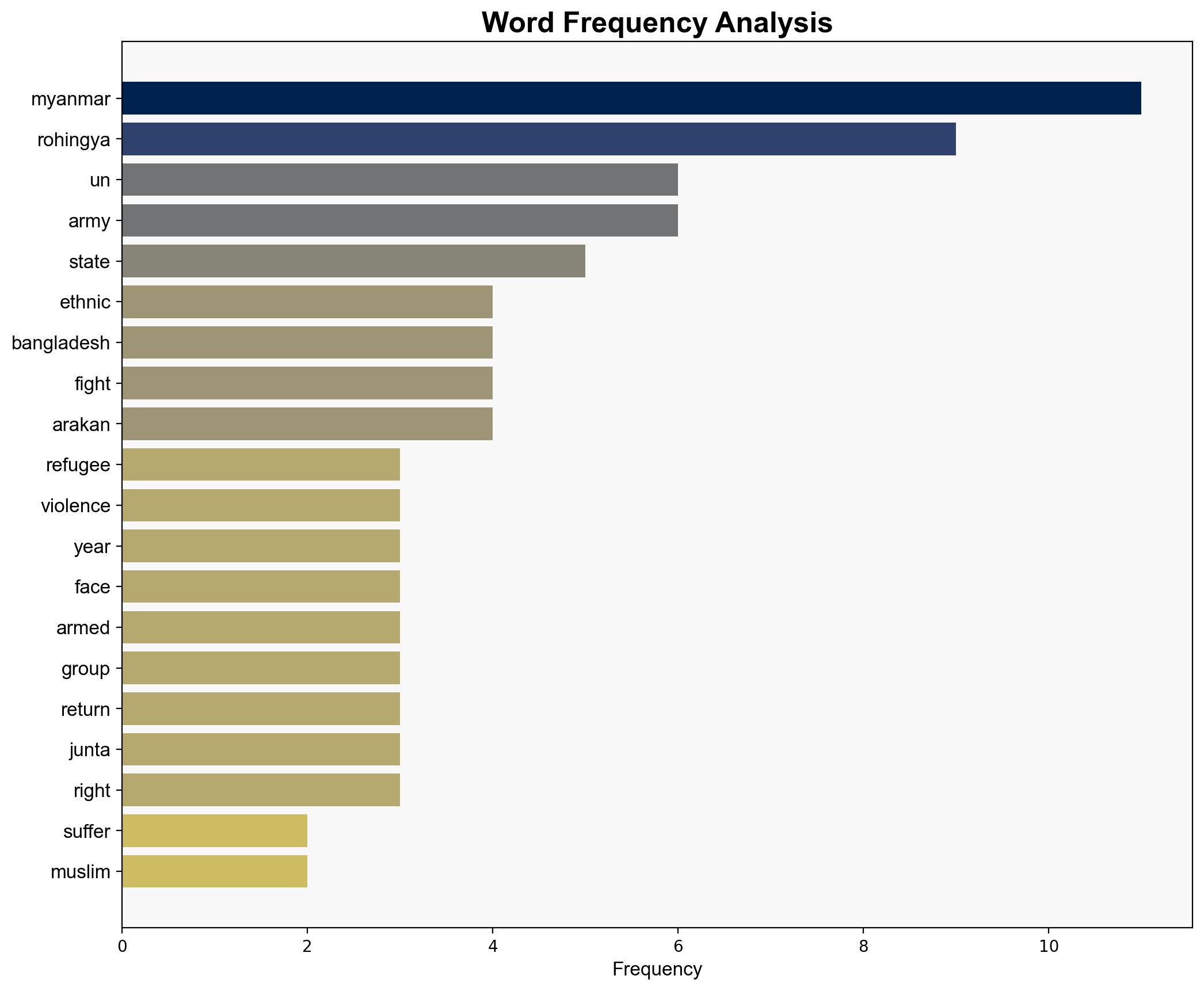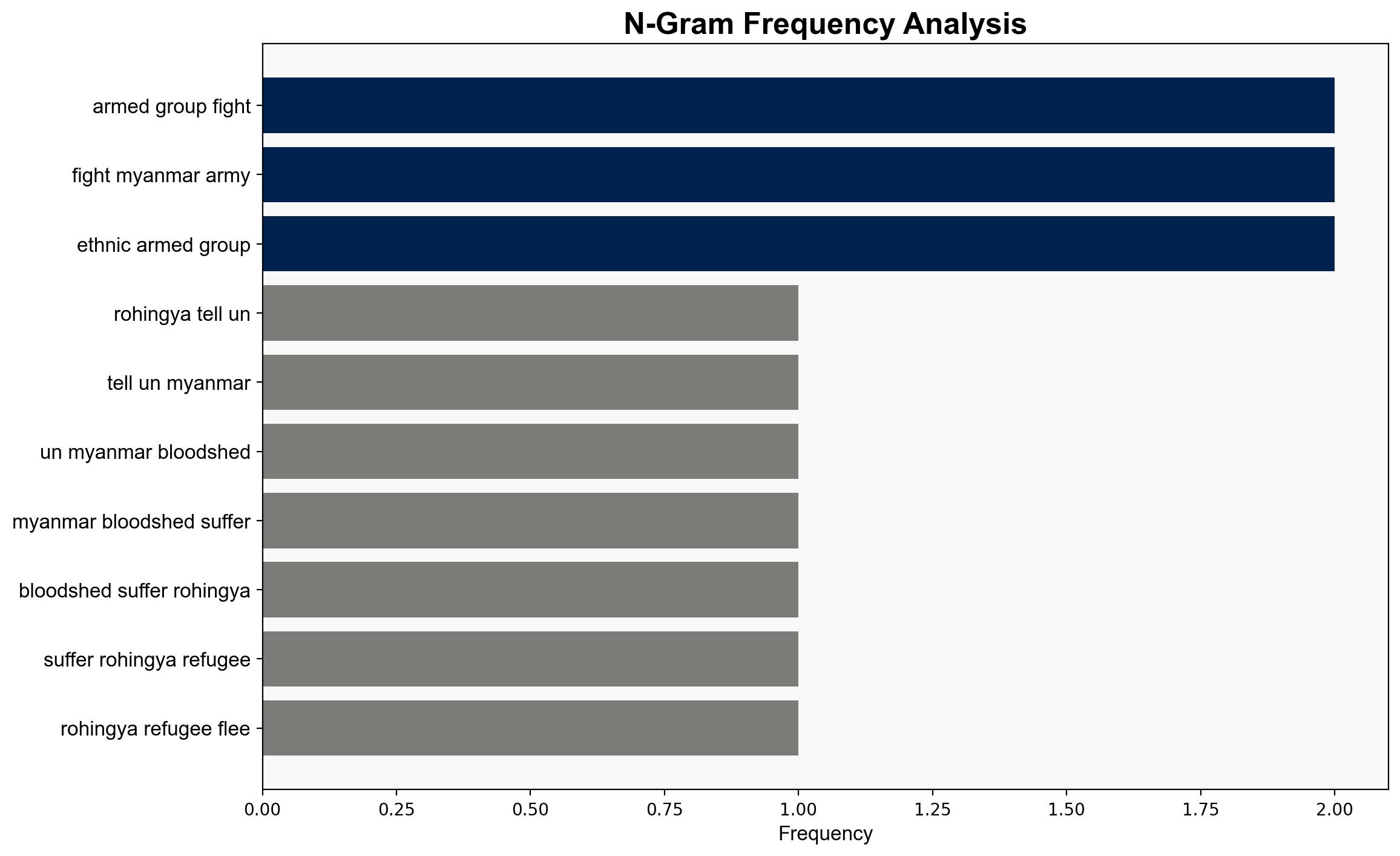Rohingya Tell UN Of Myanmar Bloodshed Suffering – International Business Times
Published on: 2025-09-30
Intelligence Report: Rohingya Tell UN Of Myanmar Bloodshed Suffering – International Business Times
1. BLUF (Bottom Line Up Front)
The most supported hypothesis is that the Rohingya crisis in Myanmar is a result of systematic oppression and ethnic violence exacerbated by the military junta’s tactics and the Arakan Army’s actions. Confidence level: High. Recommended action includes increased international diplomatic pressure on Myanmar and support for humanitarian aid to Rohingya refugees.
2. Competing Hypotheses
1. **Hypothesis A**: The violence against the Rohingya is primarily driven by the Myanmar military junta’s strategic use of ethnic conflict to maintain control and suppress dissent.
2. **Hypothesis B**: The conflict is primarily a result of the Arakan Army’s actions, with the Rohingya being collateral damage in a broader ethnic struggle against the junta.
Using ACH 2.0, Hypothesis A is better supported by the systematic nature of the oppression, historical patterns of military behavior, and multiple corroborating testimonies from UN officials and human rights organizations. Hypothesis B lacks sufficient evidence of the Arakan Army’s intent to specifically target the Rohingya as opposed to engaging in broader conflict.
3. Key Assumptions and Red Flags
– **Assumptions**: It is assumed that the testimonies provided to the UN are accurate and representative of the broader situation. There is an assumption that the junta’s actions are primarily motivated by ethnic suppression rather than political strategy.
– **Red Flags**: Potential bias in testimonies due to the emotional and political nature of the conflict. Lack of direct evidence linking specific military orders to the violence against the Rohingya.
– **Blind Spots**: Limited information on the internal dynamics of the Arakan Army and their strategic objectives.
4. Implications and Strategic Risks
The ongoing conflict poses significant risks of regional instability, potential refugee crises, and international condemnation. Economic sanctions could further isolate Myanmar, impacting regional trade. The humanitarian crisis could escalate, leading to increased international intervention. Cyber threats may emerge as actors seek to manipulate narratives or disrupt communications.
5. Recommendations and Outlook
- Enhance diplomatic efforts to pressure Myanmar for a ceasefire and humanitarian access.
- Increase funding and logistical support for refugee camps in Bangladesh.
- Scenario Projections:
- Best: Peace negotiations lead to a reduction in violence and safe repatriation of Rohingya.
- Worst: Escalation of conflict leads to regional instability and increased refugee outflows.
- Most Likely: Continued low-intensity conflict with sporadic violence and ongoing humanitarian challenges.
6. Key Individuals and Entities
– Maung Sawyeddollah
– Wai Wai Nu
– Filippo Grandi
– Julie Bishop
7. Thematic Tags
national security threats, regional focus, humanitarian crisis, ethnic conflict




